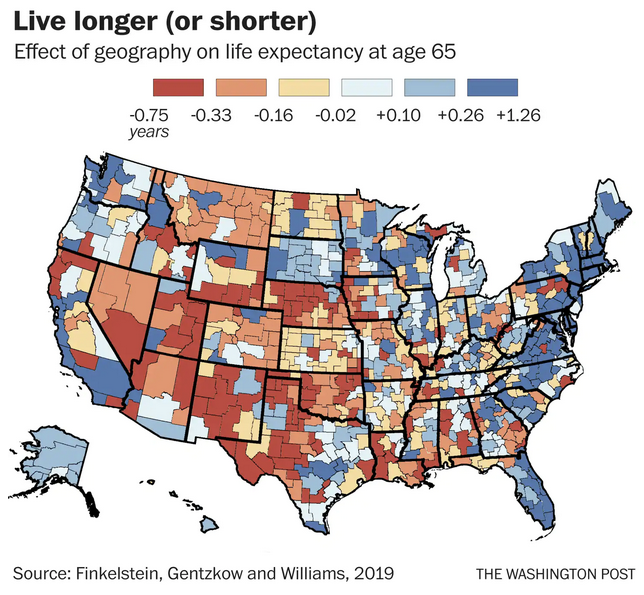American life expectancy varies dramatically by location, with groundbreaking research showing as much as a three-decade gulf separating the places where people have the longest and shortest lives. In some cities, the difference between dying in your 50s and dying in your 80s can be measured in the span of a few blocks.
Disentangling the drivers of such differences is a more complicated affair. In some ways, place is simply a proxy for many factors that affect longevity, such as income, social class and overall health. But what if there were a way to strip those factors out of the equation to arrive at a number that could tell us exactly how much life we stand to gain (or lose) by changing our state or our Zip code?
That’s exactly what new research by a team of economists at Stanford University and the Massachusetts Institute of Technology aims to do. Starting with an extensive data set of every Medicare beneficiary from 1999 to 2014, they explored life expectancy differences between people who move after age 65 and those who stay put.




